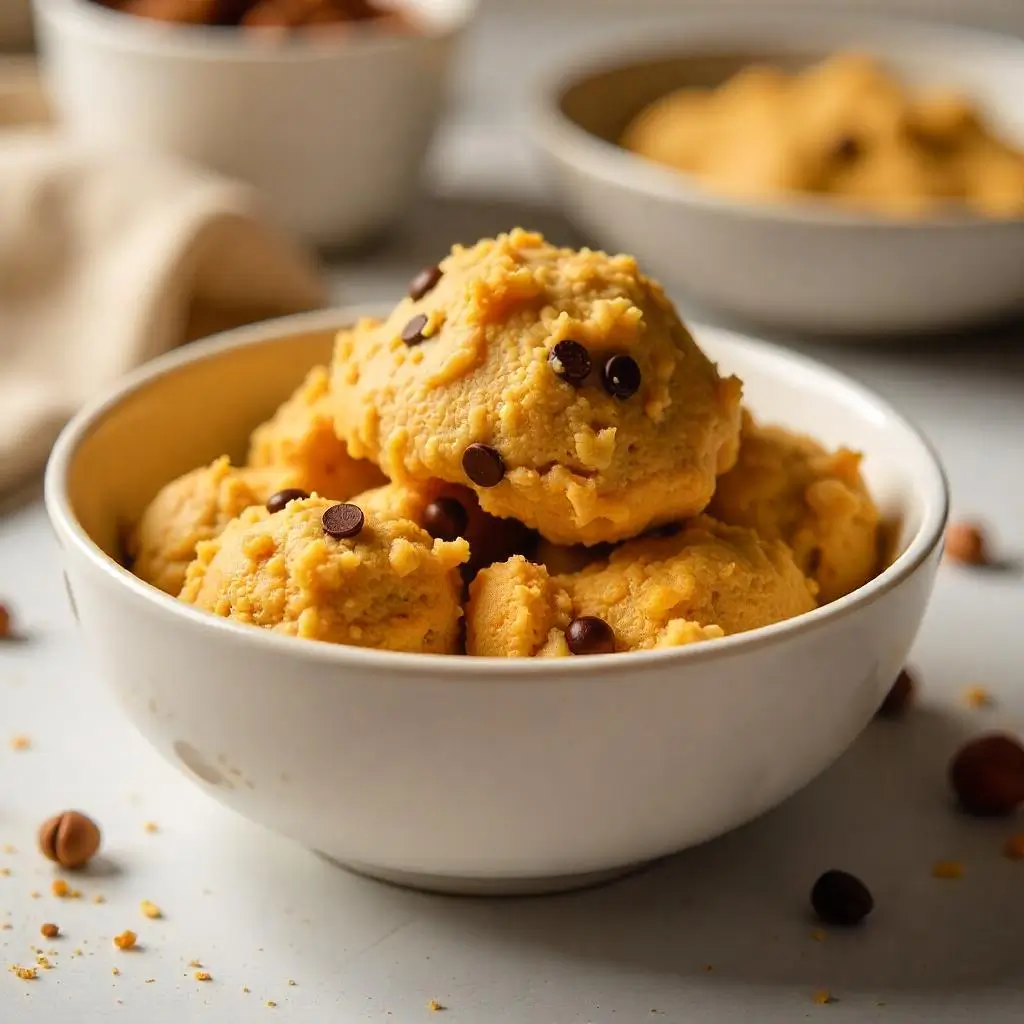Are you searching for a delicious treat that satisfies your sweet tooth while supporting your fitness goals? Look no further than this incredible protein cookie dough recipe! Furthermore, this simple and quick recipe takes just five minutes to prepare, making it perfect for busy lifestyles.
Additionally, this protein-packed treat serves as an ideal post-workout snack or healthy dessert option. Moreover, it boasts impressive nutritional credentials: it’s completely vegan, gluten-free, and contains no refined sugar. Best of all, each serving delivers a substantial 10 grams of protein to fuel your body.
What makes this recipe truly special is that it’s specifically designed as edible cookie dough, meant to be enjoyed raw without any baking required. The key ingredients include nutrient-dense almond flour, high-quality protein powder, natural maple syrup, creamy peanut butter, plant-based milk, and decadent chocolate chips.
Importantly, unlike some protein cookie dough recipes, this version contains no chickpeas or beans, ensuring a clean, authentic cookie dough flavor. Since it’s a no-bake recipe, you can satisfy your cravings instantly without waiting for baking time or cleanup.
Table of content :
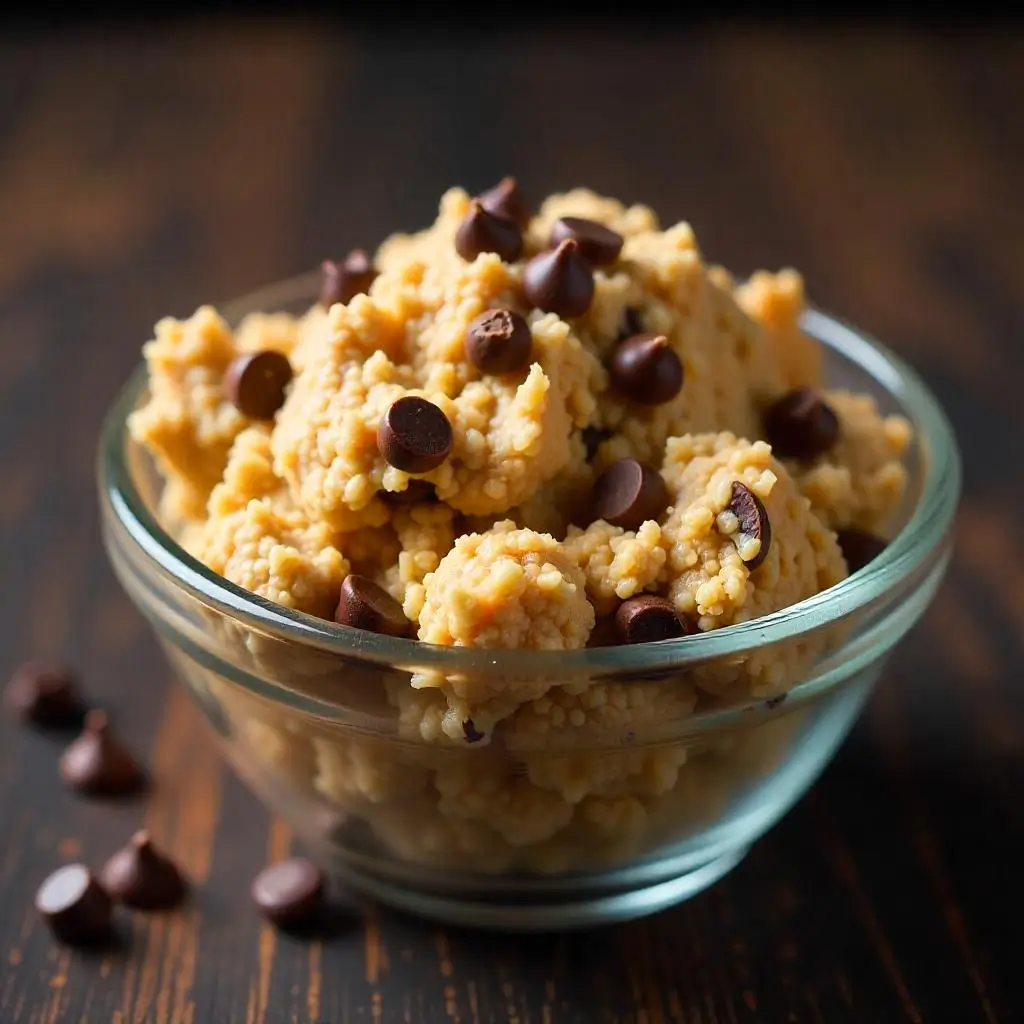
Why You’ll Absolutely Love This Protein Cookie Dough Recipe
First and foremost, this recipe is incredibly easy to make, requiring minimal kitchen skills or equipment. Even beginners can master this recipe in their first attempt. Additionally, with 10 grams of protein per serving, it provides substantial nutritional value while tasting like an indulgent dessert.
Furthermore, this healthy yet indulgent treat perfectly balances nutrition and taste. You won’t believe something so delicious can be so good for you! Moreover, being both gluten-free and vegan, it accommodates various dietary restrictions and preferences.
Most importantly, this protein cookie dough satisfies sweet cravings in a healthy way, preventing you from reaching for less nutritious alternatives. Consequently, it becomes an excellent tool for maintaining your healthy eating goals while still enjoying life’s pleasures.
Ingredient Substitutions for Your Protein Cookie Dough
Almond Flour Alternatives
If you need a nut-free option, you can substitute almond flour with oat flour. However, start with 3/4 cup since oat flour absorbs liquid differently. Importantly, avoid using all-purpose flour as it won’t provide the same texture or nutritional benefits.
Protein Powder Options
While this recipe uses vanilla pea protein powder, whey protein also works wonderfully. Nevertheless, vanilla flavor is highly recommended for the best taste profile. Although chocolate protein powder can work, it will change the overall flavor. However, avoid using collagen powder as it doesn’t provide the same binding properties.
Peanut Butter Substitutions
Similarly, you can replace peanut butter with other nut or seed butters such as cashew, almond, or sunflower seed butter. Alternatively, powdered peanut butter (like PBfit) works, though it creates a less rich texture.
Sweetener Modifications
While maple syrup is preferred for its superior texture, honey also works well. Conversely, avoid granulated sugar as it won’t dissolve properly in this no-bake recipe. For keto dieters, sugar-free alternatives like stevia or monk fruit sweeteners work perfectly. Interestingly, some users have successfully used date paste as a natural sweetener.
Milk Variations
You can use approximately 1/4 cup of any plant-based milk such as almond, soy, or oat milk. Additionally, regular dairy milk works equally well for non-vegan versions.
Chocolate Chip Alternatives
To maintain the refined sugar-free aspect, consider using stevia-sweetened chocolate chips. Furthermore, mini chocolate chips or other varieties work perfectly. You can also add chopped nuts, sprinkles, or homemade sugar-free candies for variety.
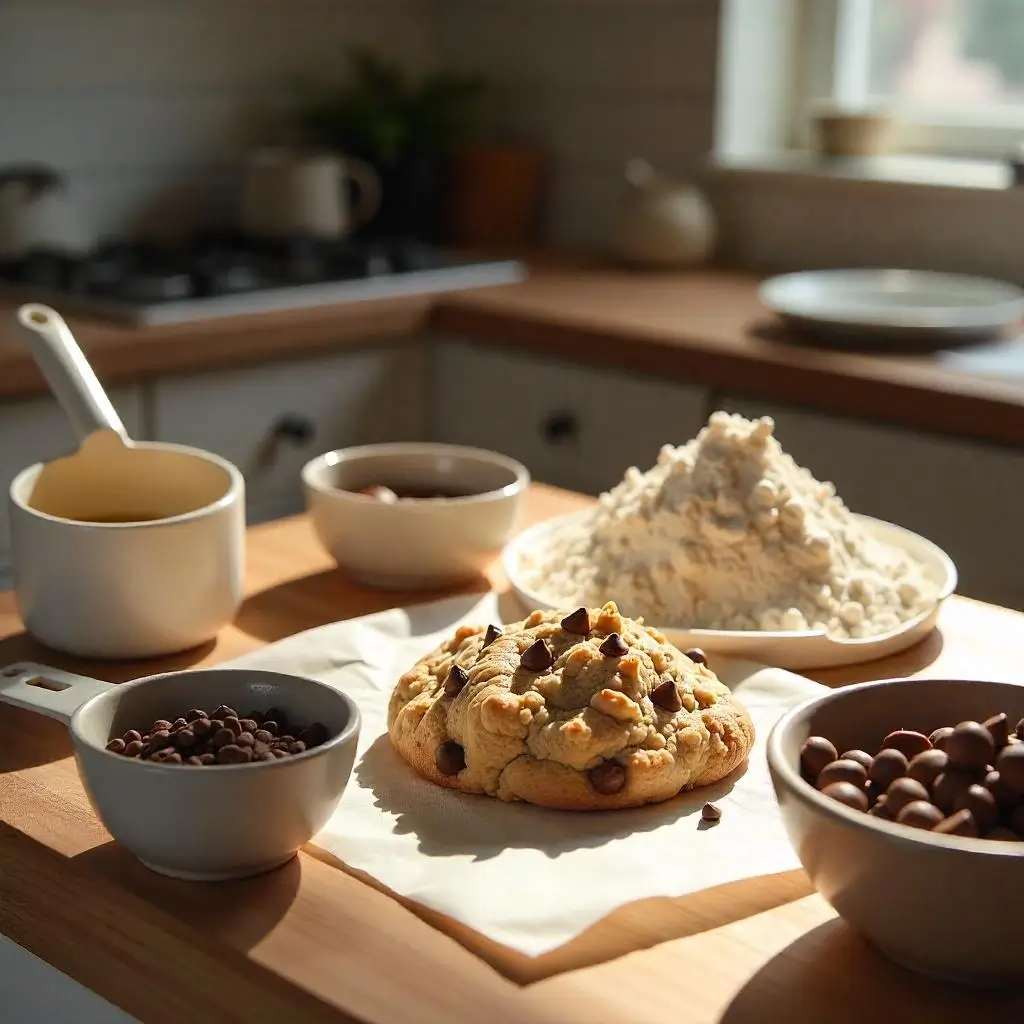
Step-by-Step Instructions:
Step 1: In a large mixing bowl, combine almond flour and protein powder. Whisk together thoroughly to eliminate any lumps.
Step 2: Place peanut butter in a microwave-safe bowl and heat for 20 seconds to soften slightly.
Step 3: Add the warmed peanut butter, maple syrup, plant milk, and vanilla extract to the dry ingredients.
Step 4: Mix everything together using a wooden spoon or spatula until a cohesive dough forms. If the mixture appears too dry, gradually add 1-2 tablespoons of additional milk.
Step 5: Fold in chocolate chips and optional sea salt, distributing evenly throughout the dough.
Step 6: Either enjoy immediately or roll into 16 small balls for portion control.
Storage Tips for Your Protein Cookie Dough
Refrigeration Method
For optimal freshness, store your protein cookie dough in an airtight container in the refrigerator for up to one week. This method maintains the best texture and prevents spoilage.
Freezing Instructions
To freeze your protein cookie dough, first roll it into small balls. Then, place them in a freezer-safe container or bag and freeze for up to one month. This method allows for easy portion control and quick access to treats.
Thawing Process
When ready to enjoy frozen protein cookie dough balls, simply let them thaw at room temperature for at least 10 minutes before consuming. This ensures optimal texture and flavor.
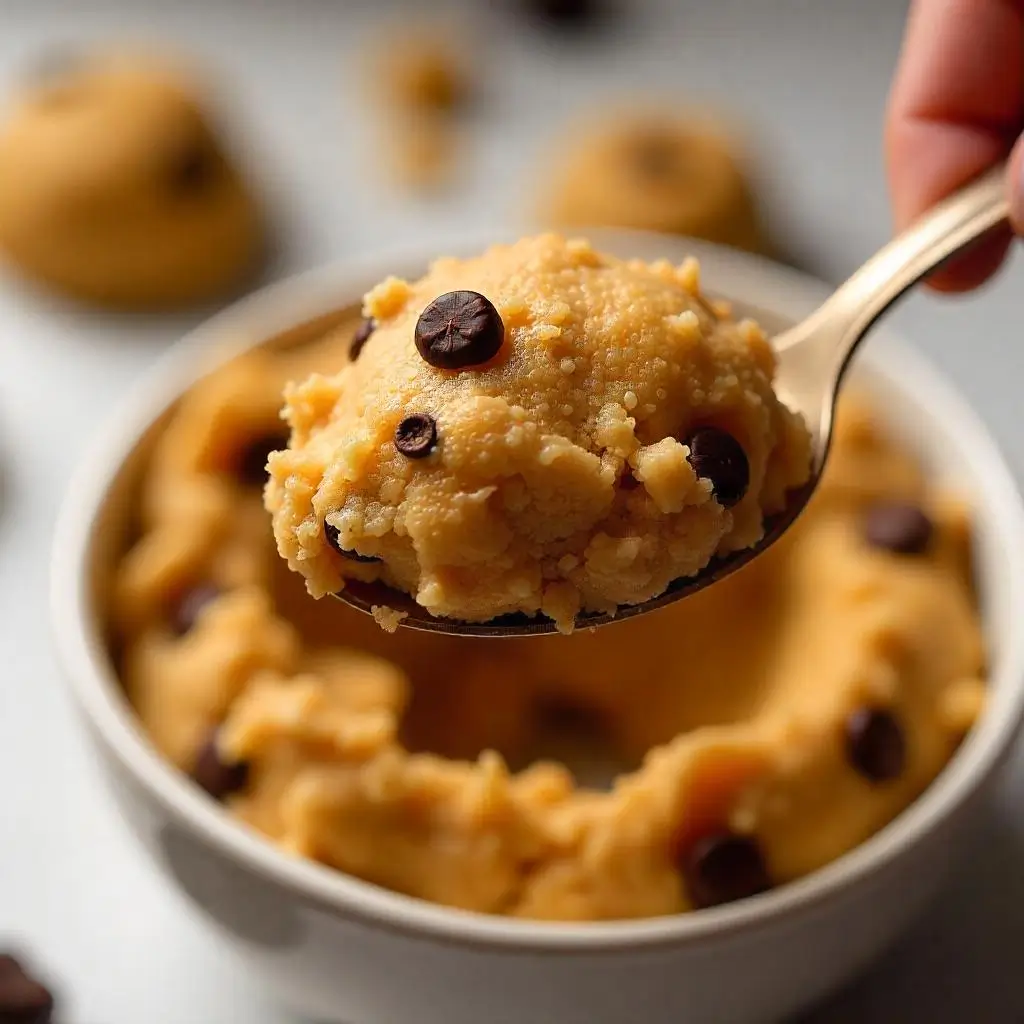
Frequently Asked Questions About Protein Cookie Dough
Can These Be Baked Into Cookies?
Unfortunately, this is not recommended. This protein no-bake cookie dough is specifically formulated to be consumed raw and won’t bake properly into traditional cookies.
Is This Recipe Keto-Friendly?
As written, this recipe is not ketogenic due to the maple syrup. However, you can easily make it keto by substituting the maple syrup with a keto-compatible liquid sweetener.
Additional Common Questions
Many users wonder about various substitutions and modifications. For instance, rice flour can replace almond flour, though the texture will differ. Similarly, liquid protein shakes can partially replace the milk, and crunchy peanut butter adds interesting texture variation.
Nutritional Information and Recipe Card
This outstanding recipe has earned an impressive 4.99/5 star rating from 72 users! The preparation time is only 10 minutes with zero cooking time required, making it incredibly convenient.
Each batch yields 8 generous servings, with each portion containing approximately 260 calories, 21g carbohydrates, 10g protein, 12g fat, 2g fiber, and 11g natural sugars. These numbers make it an excellent balance of macronutrients for active individuals.

Other recipe :
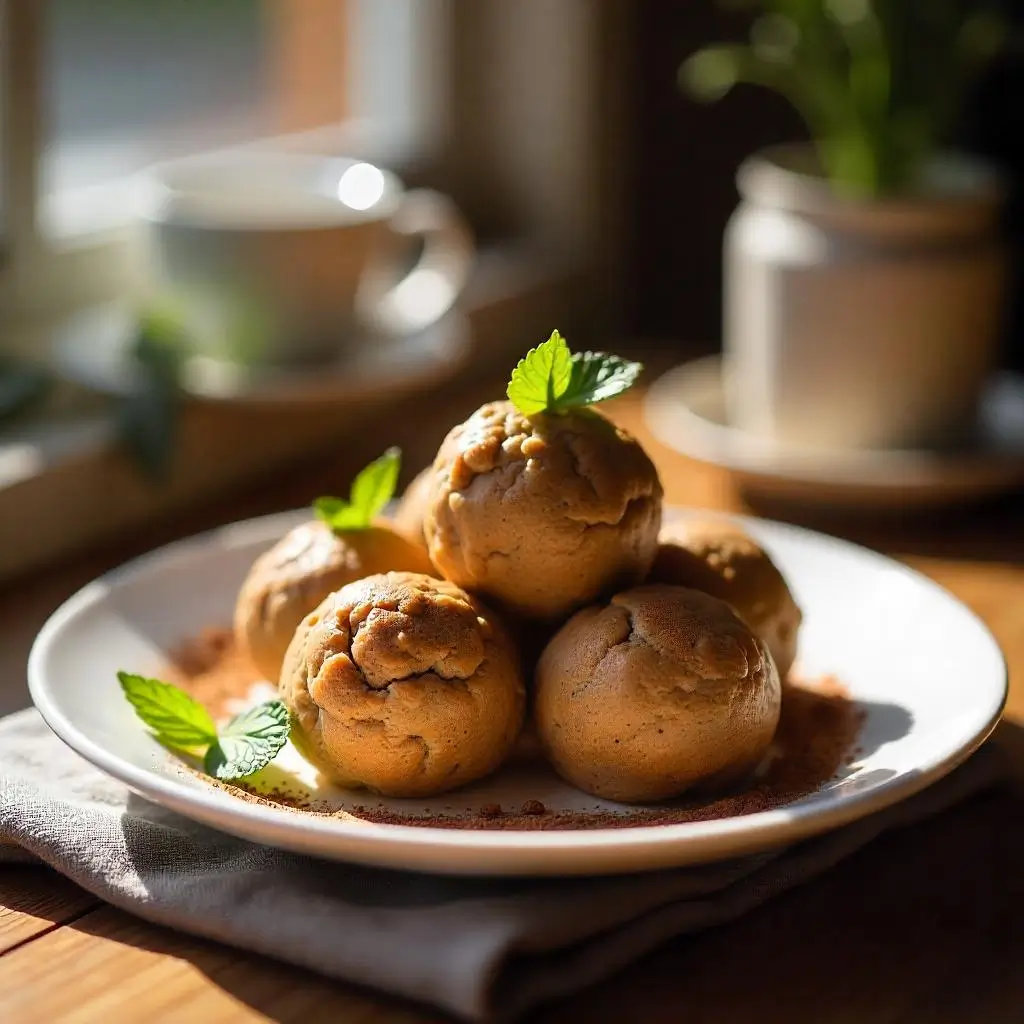
Ultimately, this protein cookie dough recipe represents a game-changing approach to healthy desserts that doesn’t compromise on taste or satisfaction. Throughout this guide, we’ve explored how simple ingredients can transform into something truly extraordinary in just five minutes.
Furthermore, the versatility of this recipe makes it suitable for virtually any dietary preference or restriction. Whether you’re following a vegan lifestyle, avoiding gluten, or simply trying to increase your protein intake, this recipe delivers on all fronts. Additionally, the numerous substitution options ensure that you can customize it perfectly to your taste preferences and nutritional needs.
Most importantly, this protein cookie dough bridges the gap between healthy eating and indulgent treats. Consequently, you no longer need to choose between supporting your fitness goals and satisfying your sweet cravings. Instead, you can enjoy both simultaneously with this nutrient-dense, delicious option.
Moreover, the convenience factor cannot be overstated. In our busy lives, having a go-to recipe that requires no baking, minimal cleanup, and delivers maximum satisfaction is invaluable. Therefore, this protein cookie dough becomes more than just a recipe – it’s a lifestyle solution.
Finally, the overwhelmingly positive feedback from users worldwide demonstrates that this isn’t just another health food trend. Rather, it’s a genuinely delicious treat that happens to be incredibly nutritious. With 10 grams of protein per serving and wholesome ingredients throughout, you’re fueling your body while treating your taste buds.
So why wait? Gather these simple ingredients today and discover why thousands of people have made this their favorite protein-packed dessert. Your future self will thank you for choosing a treat that supports your health goals while delivering pure satisfaction. After all, the best recipes are those that make healthy eating feel like a celebration rather than a sacrifice.
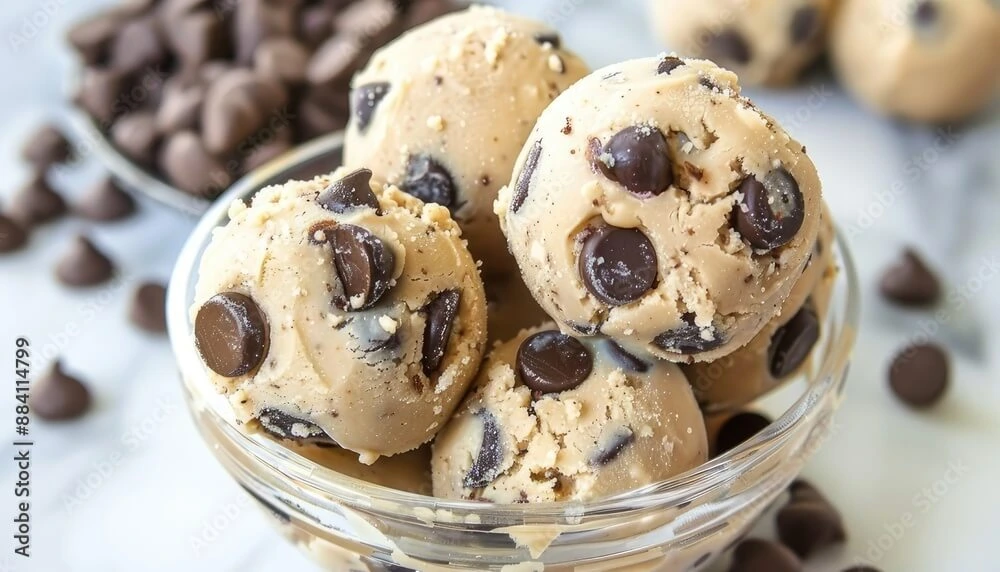
“Protein Cookie Dough Recipe: A Healthy and Delicious Treat”
Description
Enjoy a guilt-free snack with this protein cookie dough recipe! Packed with flavor and nutrients, it’s the perfect healthy treat for any time of day.
Ingredients
Instructions
- Combine dry ingredients: In a large mixing bowl, whisk together almond flour and protein powder until well combined and lump-free.
- Warm peanut butter: Place peanut butter in a microwave-safe bowl and heat for 20 seconds to soften.
- Add wet ingredients: Add warmed peanut butter, maple syrup, plant milk, and vanilla extract to the dry mixture.
- Mix thoroughly: Using a wooden spoon or spatula, mix until a cohesive dough forms. If too dry, gradually add 1-2 tablespoons additional milk.
- Add chocolate chips: Fold in chocolate chips and optional sea salt, distributing evenly.
- Shape and serve: Enjoy immediately or roll into 16 small balls for portion control.
Notes
- “Enjoy a guilt-free snack with this protein cookie dough recipe! Packed with flavor and nutrients, it’s the perfect healthy treat for any time of day.”
